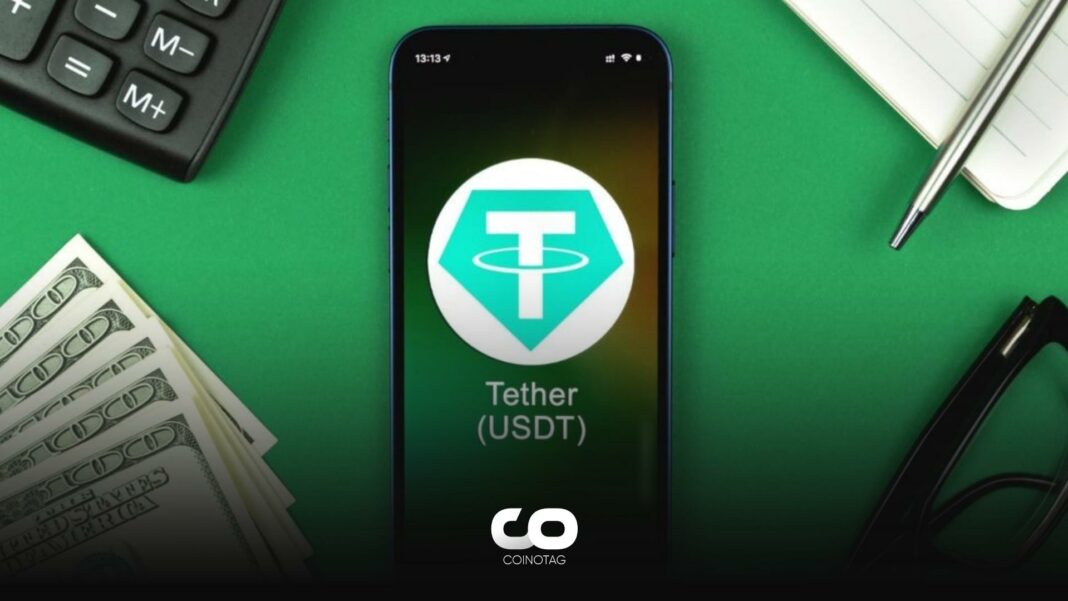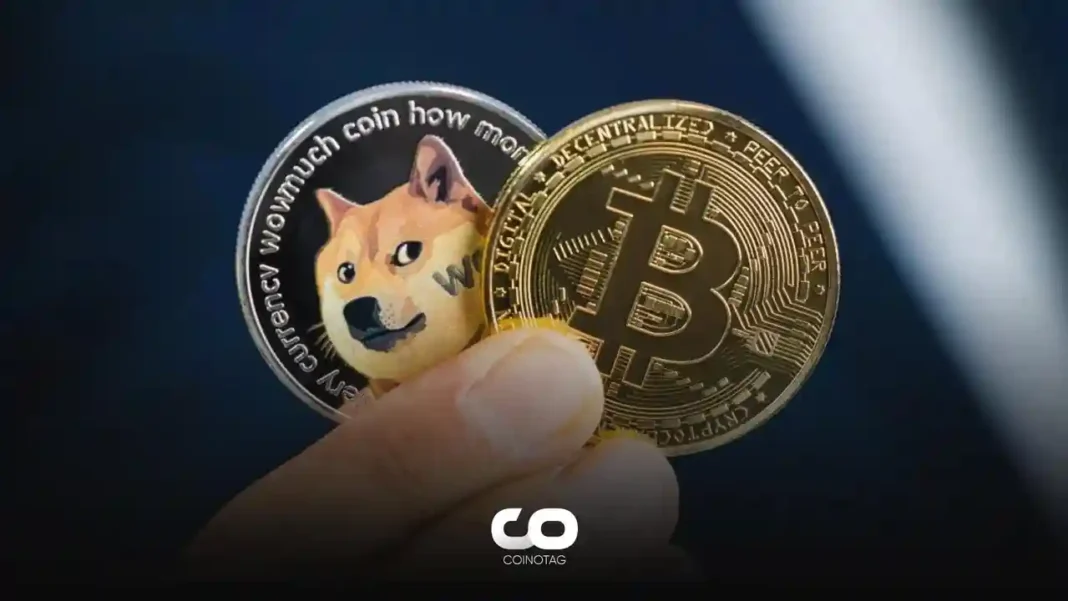| COINOTAG recommends • Exchange signup |
| 💹 Trade with pro tools |
| Fast execution, robust charts, clean risk controls. |
| 👉 Open account → |
| COINOTAG recommends • Exchange signup |
| 🚀 Smooth orders, clear control |
| Advanced order types and market depth in one view. |
| 👉 Create account → |
| COINOTAG recommends • Exchange signup |
| 📈 Clarity in volatile markets |
| Plan entries & exits, manage positions with discipline. |
| 👉 Sign up → |
| COINOTAG recommends • Exchange signup |
| ⚡ Speed, depth, reliability |
| Execute confidently when timing matters. |
| 👉 Open account → |
| COINOTAG recommends • Exchange signup |
| 🧭 A focused workflow for traders |
| Alerts, watchlists, and a repeatable process. |
| 👉 Get started → |
| COINOTAG recommends • Exchange signup |
| ✅ Data‑driven decisions |
| Focus on process—not noise. |
| 👉 Sign up → |
- Tether continues lending USDT, contradicting their previous statements.
- The latest report reveals $5.5 billion loans, up from $5.3 billion in the prior quarter.
- Wall Street Journal’s investigation sparks concerns and conversations around Tether’s transparency.
Tether’s unexpected lending rise stirs debate and questions on its promised transparency in the evolving crypto landscape.
Tether Backpedals on 2023 Lending Cessation
Despite committing to halting their lending practices, Tether has ostensibly pursued new USDT loans. Their recent financial disclosure highlights a surge in USDT-denominated loans, showcasing assets totaling $5.5 billion as of June 30, up from $5.3 billion three months prior. Wall Street Journal’s insights reveal that Tether’s move wasn’t an oversight but a calculated decision. Alex Welch, Tether’s spokesperson, justified the firm’s actions, citing longtime client relationships and the necessity to prevent liquidity crunches. Welch assures the public of a zero loan stance by 2024, contradicting Tether’s 2022 pledge.
Tether’s Statement vs Market Reality
Last year’s FTX cryptocurrency exchange collapse saw Tether striving to rebuild trust. Their assertion to decrease loans to nil in 2023 came as a hopeful move. However, contrary to this commitment, Tether’s actions show otherwise. Reacting to WSJ’s report, Tether criticized traditional financial institutions for their inadequate customer focus and lauded its excess reserves of over $3.3 billion, meant to minimize secure loan exposure.
Ambiguity Lingers Over Tether’s Loan Collaterals
Even as Tether asserts its loan issuance practices remain “over-collateralized by liquid assets”, their balance sheet transparency is under the scanner. The ambiguity stems from the lack of details regarding the collateral nature. Their quarterly figures reveal a 6.36% composition in secured loans, with a conspicuous absence of details about affiliations. Tether’s reserves predominantly feature U.S. Treasury bills, totaling about $55.8 billion, complemented by $3.3 billion in precious metals and approximately $1.7 billion in Bitcoin. Their minimalistic approach to the quarterly reports, audited by BDO Italia, gives little away about the borrowers, further fueling speculation.
| COINOTAG recommends • Professional traders group |
| 💎 Join a professional trading community |
| Work with senior traders, research‑backed setups, and risk‑first frameworks. |
| 👉 Join the group → |
| COINOTAG recommends • Professional traders group |
| 📊 Transparent performance, real process |
| Spot strategies with documented months of triple‑digit runs during strong trends; futures plans use defined R:R and sizing. |
| 👉 Get access → |
| COINOTAG recommends • Professional traders group |
| 🧭 Research → Plan → Execute |
| Daily levels, watchlists, and post‑trade reviews to build consistency. |
| 👉 Join now → |
| COINOTAG recommends • Professional traders group |
| 🛡️ Risk comes first |
| Sizing methods, invalidation rules, and R‑multiples baked into every plan. |
| 👉 Start today → |
| COINOTAG recommends • Professional traders group |
| 🧠 Learn the “why” behind each trade |
| Live breakdowns, playbooks, and framework‑first education. |
| 👉 Join the group → |
| COINOTAG recommends • Professional traders group |
| 🚀 Insider • APEX • INNER CIRCLE |
| Choose the depth you need—tools, coaching, and member rooms. |
| 👉 Explore tiers → |
Defending Amidst Controversy
Tether, amidst all discussions, stays firm on its footing. Their defense centers on the fact that a company with $3.3 billion in excess equity and prospective yearly profits of $4 billion effectively counterbalances the secured loans, retaining such profits in the balance sheet. Their emphasis remains on the commitment to eradicate secured loans from their reserves, albeit with a slightly shifted timeline.
Conclusion
The evolving narrative surrounding Tether’s lending practices offers a window into the complexities of the crypto financial landscape. As the digital currency market strives for legitimacy and trust, the onus is on giants like Tether to set precedents in transparency and commitment. The deviation from their lending pledge, though explained, will invariably raise questions. How Tether navigates these waters will significantly influence industry trust and the trajectory of crypto financial norms.
| COINOTAG recommends • Exchange signup |
| 📈 Clear interface, precise orders |
| Sharp entries & exits with actionable alerts. |
| 👉 Create free account → |
| COINOTAG recommends • Exchange signup |
| 🧠 Smarter tools. Better decisions. |
| Depth analytics and risk features in one view. |
| 👉 Sign up → |
| COINOTAG recommends • Exchange signup |
| 🎯 Take control of entries & exits |
| Set alerts, define stops, execute consistently. |
| 👉 Open account → |
| COINOTAG recommends • Exchange signup |
| 🛠️ From idea to execution |
| Turn setups into plans with practical order types. |
| 👉 Join now → |
| COINOTAG recommends • Exchange signup |
| 📋 Trade your plan |
| Watchlists and routing that support focus. |
| 👉 Get started → |
| COINOTAG recommends • Exchange signup |
| 📊 Precision without the noise |
| Data‑first workflows for active traders. |
| 👉 Sign up → |
| COINOTAG recommends • Members‑only research |
| 📌 Curated setups, clearly explained |
| Entry, invalidation, targets, and R:R defined before execution. |
| 👉 Get access → |
| COINOTAG recommends • Members‑only research |
| 🧠 Data‑led decision making |
| Technical + flow + context synthesized into actionable plans. |
| 👉 Join now → |
| COINOTAG recommends • Members‑only research |
| 🧱 Consistency over hype |
| Repeatable rules, realistic expectations, and a calmer mindset. |
| 👉 Get access → |
| COINOTAG recommends • Members‑only research |
| 🕒 Patience is an edge |
| Wait for confirmation and manage risk with checklists. |
| 👉 Join now → |
| COINOTAG recommends • Members‑only research |
| 💼 Professional mentorship |
| Guidance from seasoned traders and structured feedback loops. |
| 👉 Get access → |
| COINOTAG recommends • Members‑only research |
| 🧮 Track • Review • Improve |
| Documented PnL tracking and post‑mortems to accelerate learning. |
| 👉 Join now → |







